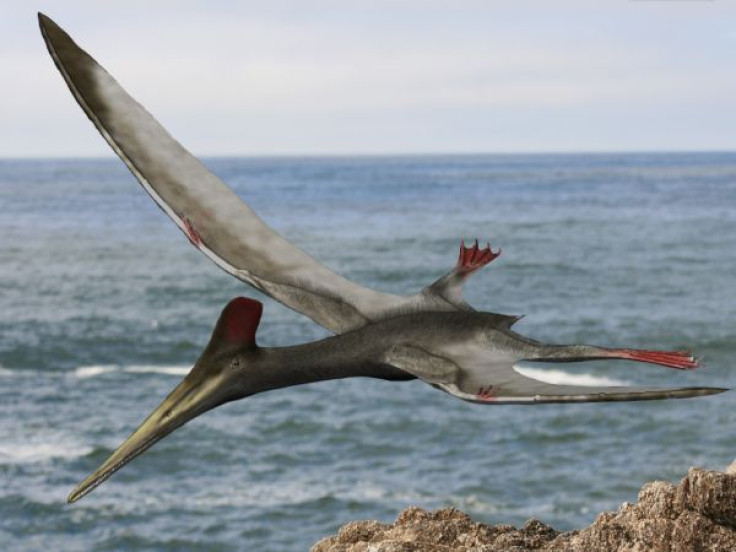Kryptodrakon progenitor: Oldest Species of 'Hidden Dragon' Pterosaur Fossil Discovered in China

An international group of scientists have discovered the remains of the earliest and most primitive species of pterosaur in northwest China, providing a vital missing link in the evolution of flight.
The eagle-sized reptile, dubbed Kryptodrakon progenitor, lived in China around 163 million years ago, longer than scientists originally thought. The fossil, which was found 35m below an ash bed and has been dated back to over 161 million years, reveals Kryptodrakon is a small pterodactyloid with a wingspan estimate of about 4.5ft.
While most of these flying reptiles became extinct around 145 million years ago, the pterodactyloid suborder lived on for another 80 million years. They continued to exist and evolve after changes to their wings and feet helped make them bigger and more enduring.
"This finding represents the earliest and most primitive pterodactyloid pterosaur, a flying reptile in a highly specialized group that includes the largest flying organisms," explained Chris Liu, program director in the National Science Foundation's Division of Earth Sciences, based in the US.
"The research has extended the fossil record of pterodactyloids by at least five million years to the Middle-Upper Jurassic boundary about 163 million years ago."
Kryptodrakon means "hidden dragon" — a reference to the film Crouching Tiger, Hidden Dragon which was filmed in the area where the fossil was first discovered in 2001.
The identification of the new species also helps explain the emergence of the largest flying creature ever to exist - the pterodactyl. The new species of Pterosaur is a relative of pterodactyloids, giant flying creatures the size of planes, which became extinct with the dinosaurs around 66 million years ago.
Co-author James Clark, a biologist with the Columbian College of Arts and Sciences at George Washington University, said there had been a gap in the fossil record between the oldest pterodactyl and its closest relative.
"The new fossil fills that temporal gap and shows that one reason for it is that the group originated inland, away from seas, where pterosaurs are not as easily preserved," Clark explained. "There is a difference in wing structure between seashore-dwelling pterosaurs and inland forms. This may have been one of the reasons for the anatomical changes in pterodactyloids."
Kryptodrakon progenitor lived around the time of the Middle-Upper Jurassic boundary. By studying the fossil fragments, researchers determined that the pterodactyloids originated, lived and evolved in terrestrial environments, whereas other specimens have been found in marine environments.
Dr Brian Andres, a paleontologist from the University of South Florida, added that the discovery reveals that as the pterosaurs evolved, their wings changed from being narrow, which are useful for marine environments, to being more broad near the origin of the pterodactyloids – helpful in navigating land environments.
"Kryptodrakon progenitor fills in a very important gap in the history of pterosaurs," Andres said. "With him, they could walk and fly in whole new ways."
The research was published in the journal Current Biology.
© Copyright IBTimes 2024. All rights reserved.






